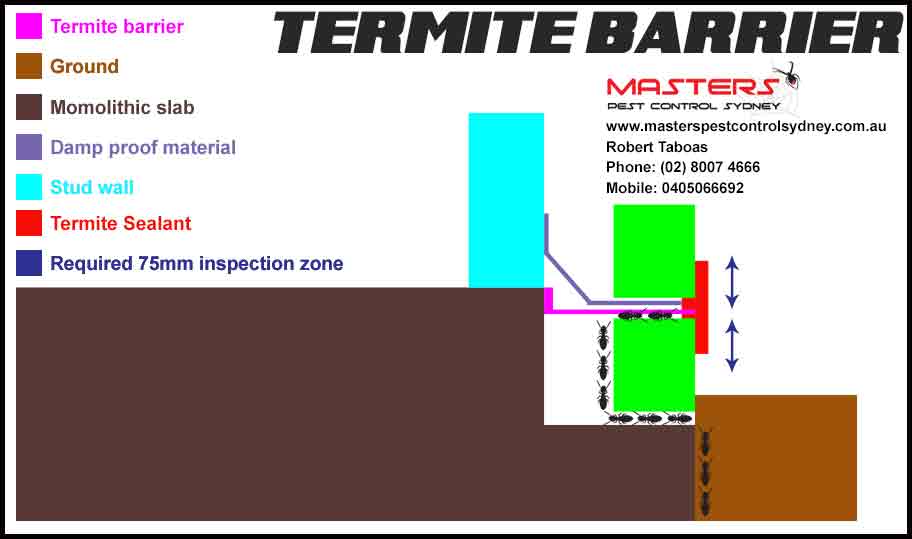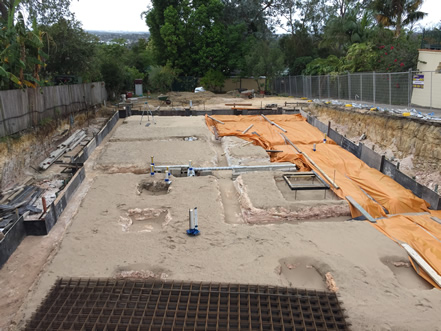Termite Barrier Installation for Sydney Homes and Businesses
Termite barriers are either physical or chemical termite barrier systems installed on any property to prevent a termite infestation.
There are different types of termite barriers available today that can be installed by professionals. The most common ones are physical termite barriers, bait systems, and chemical barriers. If you need help figuring out which one will suit your needs, please contact our team. Chat now or call us on 02 8007 4666!
Complete Termite Pest Solution
There are times when more than one strategy might be required to successfully fight termites. While the more efficient models of chemicals might work very well, Masters Pest Control provides the complete pest control solution to ensure termites cannot cause damage to your property. We can recommend appropriate baiting systems, as well as efficient termite monitoring around your property. If you suspect a termite problem, please contact our pest control experts for advice.


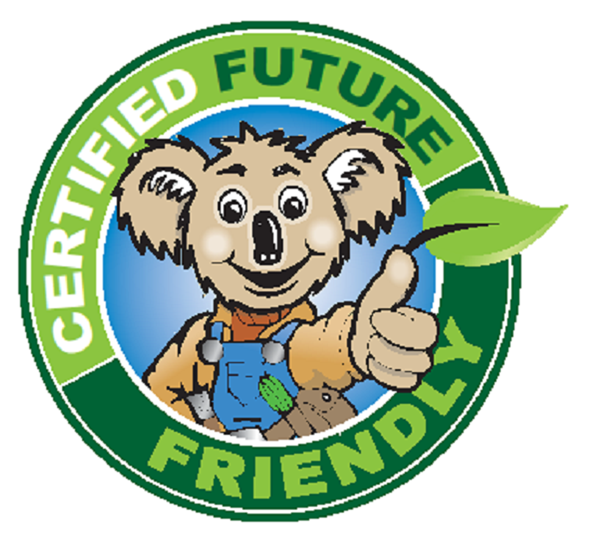

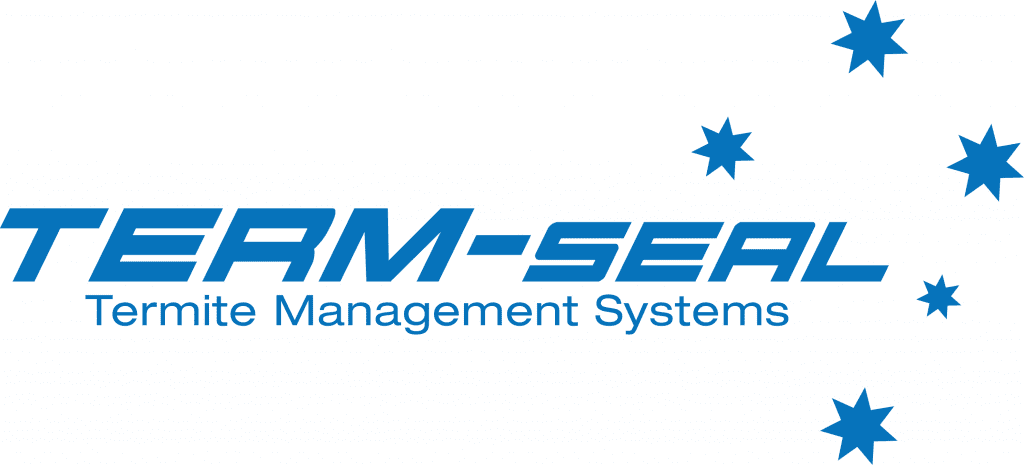

Tell us your problem
FREE QUOTE
Types of Termite Barriers
Physical Termites Barriers
A physical termite barrier around the house can be fitted as it is still under construction or added later in time. Physical walls are made up of materials that termites cannot eat through, such as rock and metal. These types of protection against termites are placed in wall cavities, foundations, under concrete slabs, and such.


Internal termite barriers can be installed by our team.
Another good way to set up a physical barrier or termite shield in your home is by sealing up all of the holes found on your roof and brickwork. This way, the termites will be left with no point of entry to the home. In addition, you can also use ant caps to push the termites into an area in which they can be much more easily detected with the naked eye.
Chemical Termite Barrier
A termite chemical barrier can be placed under slabs or in the foundations of the home that is still under construction. Another way you can use a chemical barrier is by placing it in the soil somewhere in the area around your home where termites won’t avoid it. Usually, a chemical obstacle is undetectable for the termites, and it works by having them carry it back to the nest and spread it throughout the whole colony.
A chemical barrier is very lethal for them as they won’t notice it until it is too late and it has already been spread. In addition, the poison used in most of the obstacles is quick and efficient against pests. However, it is completely safe for humans, so you should not worry that the termites might bring it to your home as well.
In some cases, it might be for the best that you implement more than one strategy at once to fight off the invasion of the termites. While the efficient chemical termite barriers might work very well, the truth is that the best way to get rid of all termites once and for all is by contacting a professional pest controller. They will use the proper tools such as baiting systems and pest exterminators and make sure that all of the pests are gone for good. If you are under the impression that some termites spread around your home, it would be best to contact professional providers of termite control in Sydney and have them conduct an inspection. You can never be too careful.
NOTE: If you find out about the pests when it is already too late, a termite barrier might not work for you anymore. In the unfortunate event that this happens, you can call our professional and highly experienced pest controller to come and help you get rid of the termites for good. We have the necessary equipment and knowledge to exterminate the termites once and for all.
Termite Barrier Installation
If you are building a termite barrier for your new home, take note that Sydney homeowners are required to install a termite barrier by Australian Standards 3660.1. The homeowner or the contractor should submit all construction details giving due consideration to the Australian Building Standards before any construction work can commence.
Need help installing a termite barrier?
Pre-construction barriers
Concrete Slabs
Concrete slabs can be used as a barrier but must be designed so that cracks passing through the slab or footing do not exceed 1 mm in width through the depth of the slab.
All interfaces between penetrations and slab footing must be provided with a barrier integrated with the slab. All joints except for tied footing slab construction joints should be provided with a termite wall system integrated with the slab. A slab on its own is not suitable. It will need an integrated barrier as well.
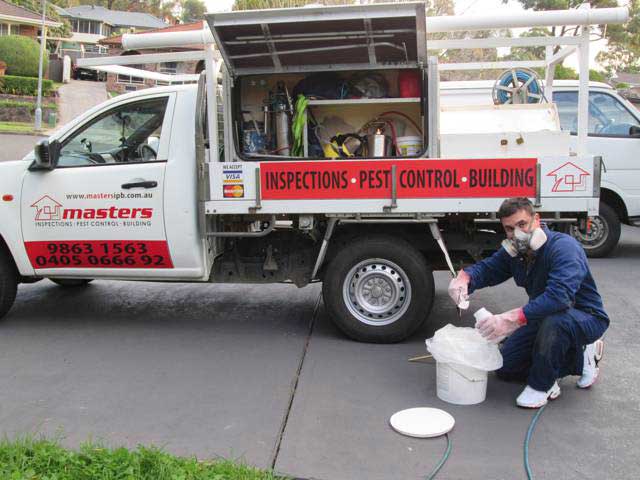

Masters Pest Control is always ready to help you get rid of termites.
Graded Particle
A graded particle barrier consists of particles that are termite resistant. They are graded and shaped so that a sufficient proportion of the particles are of a size that cannot be transported by foraging termite species. It can also be placed so that the voids between particles do not permit the penetration of foraging termites.
Sheet Material
Sheet material termites barriers and their joints consist of termite resistance materials and through which termites cannot pass. The maximum aperture size can not permit the penetration of foraging termite species found in the region for perforated sheet material barriers. The barrier can be placed in various parts of the building, such as wall cavities, in the foundation, or under the concrete slabs.
Sealing Gaps
Another good way to create a physical termite barrier is to seal up all of the holes in your roof and brickwork. You can also try placing ant caps on top of stumps to push the termites into an area where they can be detected easily. You have to be very diligent about this since termites are tiny creatures and can be very elusive.
Chemical Barriers
A chemical barrier must be termite-resistant and should consist of a product registered by the National Registration Authority for Agricultural and Veterinary Chemicals (NRA) and approved for that purpose. You can use a chemical obstacle in a remedial way by placing it in the soil in an area where the termites won’t avoid it. Chemical obstacles are undetectable by termites to carry it back to the nest and spread throughout the colony. This is a very effective method that you can utilise in your war against pests.
Popular Types of Termite Barriers
Home Guard
We use and recommend Home Guard – Termites. Home Guard has many different types of physical barriers available. We can supply and install all of the Home Guard products available. Ask us a question about termite protection for your property. The Home Guard Termite Management System is a physical barrier product that keeps subterranean termites out from your going near your property. (Related: How to get rid of termites)
TermX Replenishment System
Our company also uses the TermX Replenishment System, a reticulated termite barrier system installed before construction or around the perimeter of an existing home. It is then pumped with a registered termiticide. Depending on the termiticide used and the termite pressure in the area, it would vary how frequently you would charge the system. Generally, it would have to be done every few years.
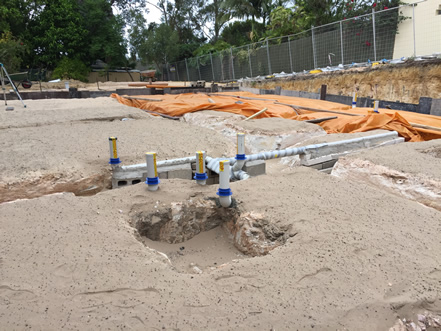

AEPMA Accredited Termite Control Professionals




Contact us to get an outline of some things you can do today in your Sydney home or business premises to help reduce the number of termites attacking your home. If you want to prevent the termites or have the termites removed the first time to save you time and hassle, contact our experts today.
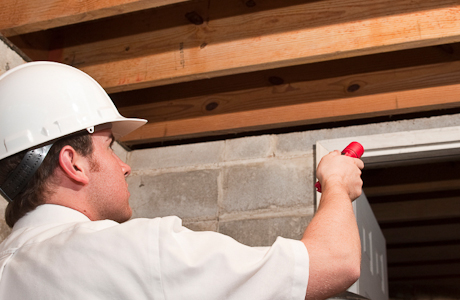

In a study commissioned by the Australian Environmental Pest Managers Association (AEPMA), researchers found that the average cost of treatment and repair of termite damage was approximately $10,000 per house. One thing is certain. You need to invest in termite control before it is too late.
Quick Facts - Termite Treatment and Termite Barriers
If you are looking for some household, do-it-yourself ways for termite control, then you know the devastation that these pests could bring to your home. Australia is home to around 350 species of termites, 20 of which are of the destructive kind. Termites love dark and moist environments, and if left unattended, they could not only destroy your home but also endanger your family in it.
There are several ways that you can do to prevent a termite infestation in your home. Termites are active all year round, especially during the summer season. If you wonder when is the right time to tackle these destructive pests, the answer is right now.
If you think your home is suffering from termite inspection, contact Masters Pest Control, the top termite control specialist in Sydney. Call (02) 8007 4666 and request a free quote.
Things to Know
- The cost of repair damage is more expensive. As we have mentioned before, the cost of treatment and repair of termite damage is $10,000 on average. There are plenty of cases where the extent of the termite damage can cost higher. Compare that to a few hundred dollars for annual termite control fees—mere pennies versus repairing termite damage.
- Termite activity affects your home’s structural integrity. Termites love wood. If parts of your home are made of wood, termites will eat through them. From support beams to wall posts and even your drywall, these pests can make your home unlivable. It can be hazardous to stay with the risk of your home falling.
- Termites can pose risks to your health. Termites are not known to carry diseases. They do bite, but the sting is non-toxic. However, these pests can cause breathing problems and allergic reactions. Dust from termite nests, as well as their droppings, can be irritants that cause asthmatic attacks.
- Termites destroy valuables. Do you have a lot of photographs? How about books? Do you store money at home? Anything made of paper is at risk of getting eaten by termites.
- You want to resell your property. Termites not only eat through your home, but they can also heat your home’s resale value even after the termite damage is controlled. Termites are active all year round. You may see more activity during the summer, but termites are actually active throughout the year, even during the winter. The cold temperature only changes their routine as they move deeper into the ground.
- Do-It-Yourself is not as effective. Termites are some of the toughest pests to treat. Doing it yourself with pesticides just may not cut it. Not only will it take more time and effort investment from you, but it may also not yield the result you desire.
- Termite control professionals are experts. Termite control requires strategic planning. Pest control experts consider the size of your home and the type of method that would work best. They also have the expertise to see signs of infestation that may be invisible to the untrained eye.
- Termite control experts have the proper equipment. Aside from professional-grade termiticide, termite control experts also have professional-grade equipment that an average homeowner does not have. Termites can reside underground, and to reach them, you may need drills, injection rods and shovels.
- You want to have peace of mind. At the end of the day, every homeowner wants to sleep peacefully at night without any worry. Your home is one of the most valuable possessions that you have. Protecting it from pests should be your number one priority.
For effective termite control, choose Masters Pest Control Sydney. Call our friendly termite control experts on (02) 8007 4666 and get a free quote.
Learn how to identify a termite infestation
To learn termite control, you need to learn the telltale signs of a termite infestation. There are many resources from the internet on the types of termites in Australia and their diet and behaviour. Learning how to identify termites from other insects can help you determine the next course of action.
Some of the signs that point to a termite infestation include:
- Swarm of winged insects near light sources
- Mud-like tunnels on walls and foundation
- Cracked or bubbling paint
- Hollow sounds from wood
- Tiny holes on wood
- Pile of insect wings from swarmers
- Termite droppings
Easy Ways to Prevent a Termite Infestation
Fix all leaky pipes, drains, and AC units.
Termites love moist environments. If you have a dripping or leaking pipe, especially around your home base, or if you have a poor drainage system that lets water pool in your yard, your home is the perfect place for termites to nest. Moist areas such as the area around your air-conditioning units and under your sink are susceptible to termite infestation. Always check your pipes and gutters. If possible, call an expert plumber immediately.
Clear decaying stumps and trim trees and bushes.
Wood is the favourite food of termites. If you have wood around your home, it can easily become termites’ first step toward infiltrating your home. Decaying stumps that have not been cleared is a great food source for subterranean termites and damp wood termites. Remove the stump immediately, especially if it is 4-5 feet away from your home.
Living vegetation can also pose a problem. Keep your trees and bushes trimmed and far away from home. Instead of using regular mulch, use rubber mulch which deters termites.
Use plastic storage boxes instead of cardboard.
Termites get their nutrients from cellulose which means they will eat anything made from wood. Cardboard is made of wood and prone to getting damp if placed in the basement or attic. This makes cardboard boxes a gourmet meal for these pests. If you store some of your home equipment, supplies and other materials in cardboard boxes, consider replacing them with plastic storage boxes or metal shelving.
Schedule an annual termite inspection.
Termites are called “silent destroyers” for a reason. As they can be quite elusive, you may not even be aware that you already have a termite infestation in your home. You need to hire a termite control Sydney expert to pinpoint signs of termites you may have missed. An annual termite inspection usually includes checking basements, attics, crawl spaces and other wooden structures in your home.
For a termite-free home, contact our trained pest control specialists at Masters Pest Control Sydney. Call us on (02) 8007 4666 for a free quote.
Residential Termite Barriers
What makes summer the termite season that you need to watch out for?
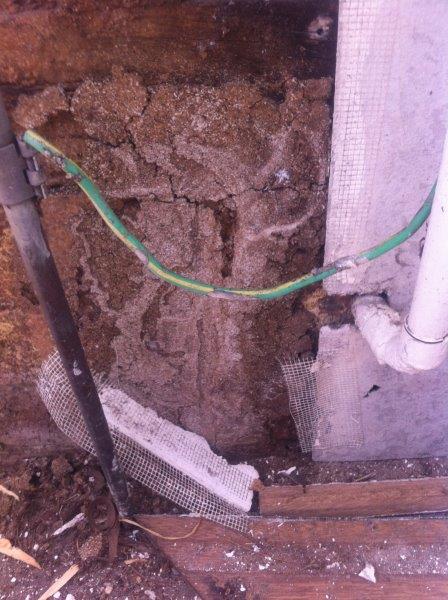

Prevent termite damage by protecting your home from these nasty white ants. Call (02) 8007 4666 for a FREE consultation.
In the warmer months of the year, you may see termites more often as they work for their colony. This increase in activity lies in termite biology. Termites are cold-blooded insects. They do not have the ability to generate their own body temperature. This means that temperature changes in the environment can also lead to changes in their physiology.
Because of the warm temperature, summer is the best season for termites to swarm. During this period, the weather creates an ideal environment for termite breeding and exploration.
The colony may also let loose flying termites separate from their current colony to begin a new one. When they find a suitable place, the nest-building process will begin. This is why it's important to guard your home from new termites looking to start their colonies.
Should you ignore termites during winter?
Termites may be more active in summer, but that doesn’t mean your home is safe from termites during the winter. As we’ve previously mentioned, temperature changes affect the routine of termites. They are actually not dormant during the winter. Termites handle the cold by burrowing deeper into the soil to maintain a warmer temperature. While they are much slower during this season, they still do forage for food and damage the wooden parts of your home.
Dealing with Termites during Summer
Summer may be the termite season, by that doesn’t mean you can’t do anything to minimise their damage to your home. Here are some helpful tips to limit the risk of termites infesting your home.
- When you spot a swarm of flying termites, turn off your lights. These pests are attracted to light sources, so turning them off may deter them from coming to your home.
- Keep mulch away from your home. This type of soil attracts termites because of its nutrients and moisture. Use rubber mulch which does not attract termites.
- Conduct a routine termite inspection around your home. Watch out for some visible signs of termite infestation, such as detached termite wings or rotting wood.
- Seal cracks and crevices to prevent termites from entering. Use caulk or silicone-based sealant to prevent them from crawling into your home’s foundation.
- Consult a pest control Sydney provider near you. At the first sign of infestation, it is best to call experts for effective pest control solutions.
Types of Termites
It’s hard to imagine how one can function around the clock to eat wood, but that’s exactly what subterranean termites do all their life. Termites, among other pests, can reduce a property’s value. The damage they can bring to any wooden structure can pose a real-world risk to anyone living or occupying the said space. They also damage furniture, which can be costly to the owners. Their threat is not to be displaced and passed up as something that will blow over anytime soon. Even after treatment or extermination, there are cases that they return to rebuild their destructive colony again.
One must be proactive in ensuring that their structure, home, furniture, and premises are free from these invasive species. How do you determine if you have a subterranean termite infestation? We will list in this article the things you need to know about these destructive pests.
What are Subterranean Termites?
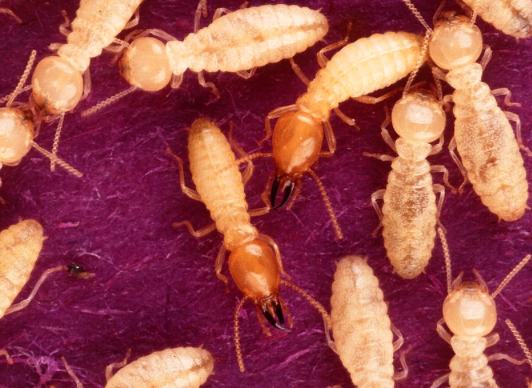

Termite control experts can help you identify the termites infesting your property. Call (02) 8007 4666 to schedule a termite inspection.
Their behaviour distinguishes these. They build mud tunnels along their pathways to keep themselves from the open air. Their strong jaws are capable of working day in and day out. They chomp on wood and destroy property like it’s no other’s business. These types of termites usually swarm during the spring and can have upwards of 2 million population. That’s more than two million wood-eating insects under a house or a structure.
These species of termites are known to be the most destructive of their kind. They vary in size according to their function. A worker can range from one-eighth to three-eighths of an inch. Soldiers may have the same length, but a larger head and more powerful mandibles distinguish them from others. The colour of termites also varies according to their societal function. Workers tend to be paler compared to soldiers and have a cream-coloured exterior. Soldiers have a darker brown colour on their heads.
While these termites are small, they are well capable of separating cellulose from any wooden source. Workers live underground and pass through mud tunnels that keep them safe and hidden. Despite lacking eyes, they know the difference if it's light or dark outside. This is crucial because if they are exposed to light, it means they are in danger of predators and may lose moisture from their bodies.
Where do subterranean termites live
As their name suggests, they tend to live underground. This means as deep as several feet underground. They can have upwards of two million members per colony. Some nests can also be found above ground and are easy to spot. This exemption only happens when there is enough moisture to supplement the colony and its activities. This can also happen if there is a bustling colony under it. Very rarely does a colony starting from above ground.
How to deal with subterranean termites
Termite attacks are often unrecognizable to the naked eye since they mostly work underground or within walls. This can go on for years without being noticed. This is the danger because before you find out, the damage that has been done may have been more extensive than you thought it would be. Be on the lookout for the first signs of termite invasion. These can be simply small isolated workers or soldiers foraging other food sources, mud tunnels, or hollow-sounding wood. Time is of the essence when you find out these first signs and symptoms of a termite invasion. Make sure to act immediately.
The best advice is to contact a subterranean termites pest control professional. A specialist has all the means to diagnose if you have a massive problem or something they can immediately address. There are also types that the workers can bring back to the colony unaware. They can affect the colony from the inside. This is called baiting. Some chemical termite barriers can also be sprayed in the vicinity of your home or property to repel or kill the termites. If you are building a house in an area where there have been reports of termite infestation, then professionals can also install physical barriers and repellants around the building to keep it free from any unwanted pests.
Termite Breeding Behaviour
They fly. Yes, that’s right. When the weather is getting warmer, reproductive termites with wings, called alates, fly in droves. They begin massive mating rituals that can go on for several days. Spring is the ideal time for subterranean termites to reproduce. While most people will think of spring as the time for melting snow, blooming flowers and butterflies abounding, you should also be on the lookout for flying termites. Swarmers have two sets of wings that lay flat on their abdomens that they only use during the reproductive season. Young males emerge from their nests in large groups to look for mates.
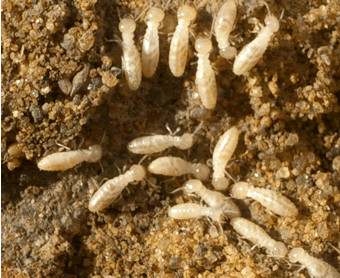

Termites crawling on the ground
The female termites release pheromones that attract males. Here’s the romantic part: once a male finds a mate, it breaks off their wings. It symbolizes that they have found a mate. Nothing romantic follows, especially for the affected property owner. The new colony is about to get started after this charade. So, one of the signs to raise the infestation flag is when you see discarded termite wings.
Termites start as nymphs after hatching. They eventually shed their skin and develop into adult termites and begin to work soon as they are capable. Subterranean termites have queens that can live up to 30 years and lay eggs by the thousands day by day. These eggs have the potential to be other kings and queens who can multiply and start their colonies. Talk about an infinite loop.
They can also take on different roles. Some become the principal workers. These are the ones that do the most damage in homes and properties as they work nonstop to get the cellulose from wood. They have strong mandibles that can eat into the wood. Some become soldiers. As their namesake explains, they protect the colony from outside intervention and harm. Some termites develop wings and become the main reproductive team of the colony.
Termites are social insects. They live in colonies underground or inside dead or rotting wood. Building foundation and wooden furniture can also be their home sweet home which is why property owners should be on the constant lookout for telltale signs of termite infestation. Most of the time, termite damage is not covered by insurance, so you should always be proactive when dealing with termites.
How long before a colony is created?
Depending on the species, it may take up to 3 years before a colony reaches its fully mature and ripe state. In the first year, the queen may just lay less than 30 eggs. It may not be too obvious that there’s a budding colony right there. The subterranean termite colony may only grow to 75 individuals during its first year. Therefore, there’s not much damage to any wood that will trigger the alarm for any property owner.
Because of this slow growth, some people think that termites only breed during the spring, whereas, like a real community, it is working twenty-four hours and seven days of the week all year round. One can’t simply think that the colony will not grow to be a full-sized and mature community of invasive pests.
What to do with spring swarmers?
The best thing to do if you spot termites around your property is to call termite control professionals. If you have seen some termites above ground, the chances are that you already have an infestation growing nearby. Try to look for the source to help the professionals address the problem faster and more efficiently. If you can’t find it, then you can let the professionals settle it for you.
The best way to prevent further damage is to act immediately. Even if the termite infestation is small, as we know, it only takes a small colony of less than a hundred to become a community of two million or more subterranean termites to damage and destroy your properties.
In the spring season, don’t just take notice of the birds and the bees. Look for signs of spring swarmers, their patterns, behaviours, and, if possible, their nests. The whole year would be much better if your house or properties were free of any termite infestation.

